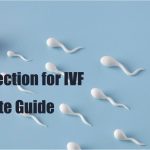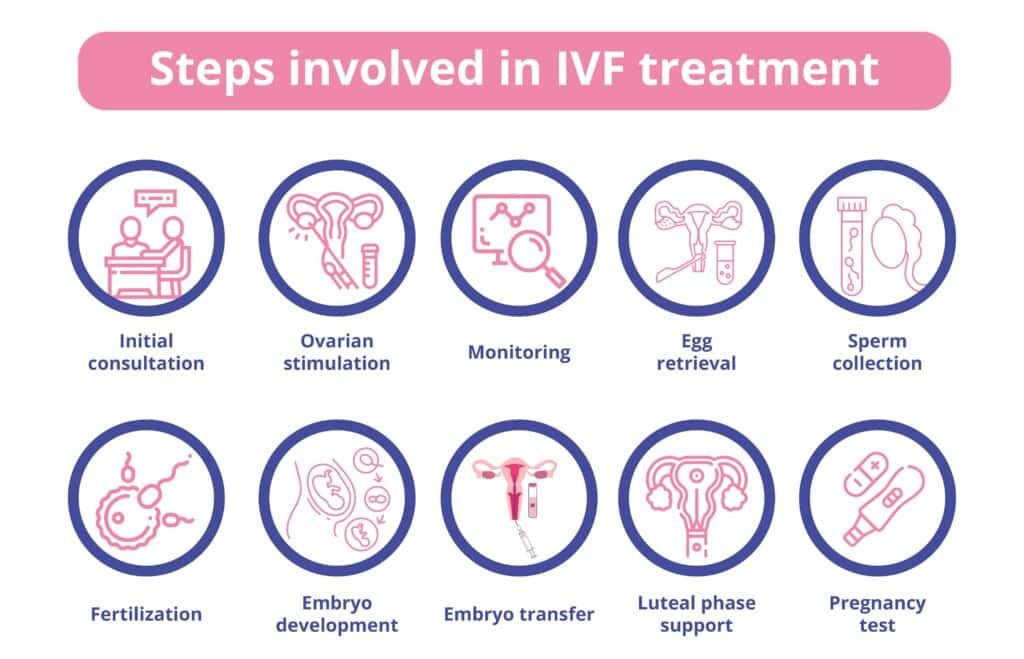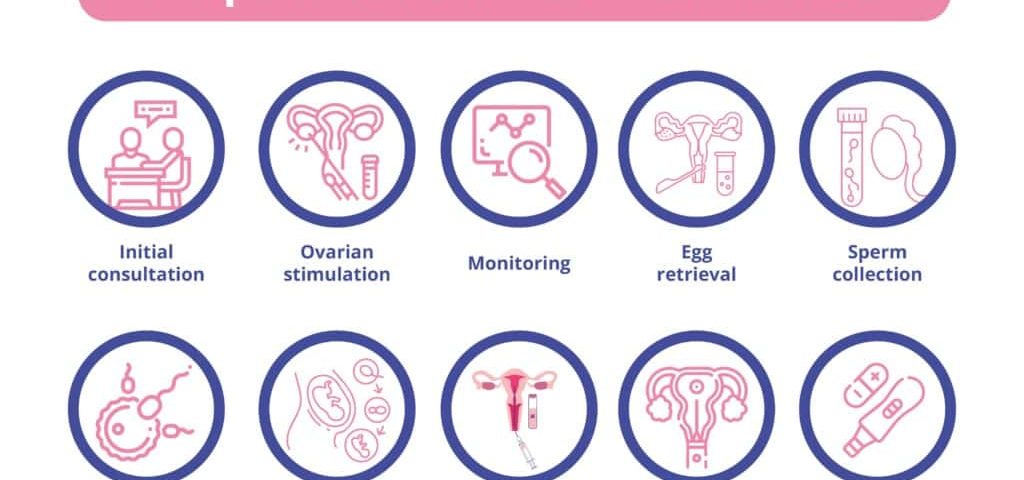
Finding the Best IVF Clinic in NYC: Your Ultimate Guide to Starting a Family
April 29, 2025
IVF Gender Selection Price: What You Need to Know Before You Decide
April 29, 2025IVF Cost in America: What You Need to Know Before Starting Your Journey
Hey there! If you’re reading this, chances are you’re curious about IVF (in vitro fertilization) and what it costs in America. Maybe you’re dreaming of starting a family, or perhaps you’re just digging into options for a friend or loved one. Either way, you’ve landed in the right spot. IVF can feel like a big, mysterious puzzle—especially when it comes to the price tag. So, let’s break it down together, step by step, with all the juicy details you won’t find just anywhere. From hidden fees to surprising ways to save, I’ve got you covered with fresh insights, real-life examples, and the latest info to make this journey a little less overwhelming.
How Much Does IVF Really Cost in America?
Let’s start with the big question: how much are we talking here? The short answer is that IVF isn’t cheap. On average, one cycle of IVF in the U.S. costs between $15,000 and $30,000. But here’s the catch—that’s just the starting point. Depending on where you live, what extras you need, and how many tries it takes, that number can climb fast. Some folks end up spending $50,000 or more before they hold their little one in their arms. Crazy, right?
Breaking Down the Base Price
So, what’s included in that $15,000 to $30,000? Most clinics bundle a few key steps into their “base fee.” Here’s what you’re typically paying for:
- Monitoring appointments: Think ultrasounds and blood tests to check how your body’s responding.
- Egg retrieval: A quick procedure where doctors collect eggs from your ovaries (don’t worry, you’re asleep for this!).
- Lab work: Where the magic happens—sperm meets egg in a dish.
- Embryo transfer: Placing that tiny embryo into the uterus.
But—and this is a big but—that base price doesn’t always cover everything. Meds? Extra tests? Freezing embryos for later? Those can add thousands more.
Why the Price Tag Varies So Much
Ever wonder why one clinic quotes $12,000 while another says $25,000? It’s not just random. Here’s what’s driving the differences:
- Location: Big cities like New York or LA often charge more than smaller towns. Think of it like rent—higher costs get passed on to you.
- Clinic reputation: Fancy places with high success rates (or celebrity endorsements!) might jack up the price.
- Extras: Some clinics throw in perks like genetic testing or fancy embryo monitoring, but it’s not free.
For example, in California, a basic IVF cycle might start at $20,000, while in a state like Ohio, you could find it closer to $14,000. It’s wild how much your zip code matters!
The Sneaky Add-Ons You Didn’t See Coming
Here’s where things get interesting—and a little sneaky. A lot of people don’t realize that the “base fee” is just the beginning. These extras can pile up fast:
- Medications: These can cost $3,000 to $6,000 per cycle. They’re the hormones that help your ovaries pump out more eggs.
- Genetic testing (PGT-A): Want to check your embryos for issues? That’s another $4,500 to $5,500.
- Frozen embryo storage: Keeping extras on ice runs about $500 to $1,000 a year.
- Donor eggs or sperm: If you need these, add $10,000 to $20,000 (or more!).
Real talk: one mom I heard about thought she’d budgeted $18,000 for IVF. By the end, with meds and a surprise anesthesia fee, she was out $27,000—for one try!
What Makes IVF So Expensive Anyway?
Okay, so why does IVF cost more than a used car? It’s not just greed—there’s a lot going on behind the scenes that racks up the bill.
The Science Factor
IVF isn’t your average doctor’s visit. It’s high-tech stuff! Picture this: a team of experts using microscopes and lasers (yep, lasers!) to pair up eggs and sperm in a lab. That takes pricey equipment, sterile rooms, and people who’ve spent years training. Dr. Karen Tang, a gynecologist, once said, “IVF involves so many specialists—embryologists, nurses, anesthesiologists—that the costs add up before you even blink.”
The Medication Mystery
Those hormone shots? They’re not cheap. A single vial of something like Gonal-F (a common fertility drug) can cost $100 or more, and you might need dozens over two weeks. Why so pricey? Drug companies say it’s because of research and strict safety rules, but it still stings when you’re writing the check.
No Insurance, No Problem? Nope.
Here’s a shocker: most insurance plans in the U.S. don’t cover IVF. Only about 20 states have laws saying insurance has to help with fertility treatments, and even then, it’s spotty. If your boss self-insures their company (common with big employers), they can skip those rules entirely. So, for tons of people, it’s all out of pocket. Ouch.
Hidden Costs That’ll Catch You Off Guard
Alright, let’s spill some tea—IVF comes with costs you might not even think about until they hit you. These are the little secrets clinics don’t always advertise.
Travel and Time Off Work
Live far from a clinic? You might be driving hours for appointments—or even flying. One couple I read about spent $2,000 on gas and hotels during their IVF cycle because the nearest clinic was 200 miles away. Plus, all those doctor visits mean taking time off work. No paid leave for that? Your wallet’s taking another hit.
Emotional Support Costs
IVF can be an emotional rollercoaster. Some folks end up seeing a therapist to cope—add $100 to $200 per session. Or maybe you join a support group (sometimes free, sometimes not). It’s not “required,” but it’s a real expense for many.
The “What If” Scenarios
What if your first cycle fails? The national success rate for women under 35 is about 55% per cycle, says the CDC. That drops as you get older. So, if you’re 38, you might only have a 20% shot per try. Multiple cycles mean multiplying that $15,000-$30,000 price tag. One woman shared online that she spent $60,000 over three rounds before her baby arrived.
How Many Cycles Will You Need?
This is the million-dollar question (sometimes literally!). How many times will you have to do IVF before it works? Let’s dig into the numbers and what affects them.
Success Rates by Age
Age is a huge deal here. Check out these stats from the Society for Assisted Reproductive Technology (SART) for 2021:
- Under 35: 45% chance of a live birth per cycle.
- 35-37: 32% chance.
- 38-40: 20% chance.
- 41-42: 10% chance.
- Over 42: Less than 3% chance.
So, if you’re younger, you might get lucky on the first try. Older? You might need two, three, or more cycles.
Other Factors That Play a Role
It’s not just age. Things like:
- Your health: Issues like endometriosis or low egg count can lower your odds.
- Embryo quality: Not all embryos make it to the finish line.
- Lifestyle: Smoking, stress, or extra weight can mess with success.
A study in Fertility and Sterility found that women eating a Mediterranean diet (think fish, veggies, olive oil) had a 65% higher chance of IVF working. Cool, huh?
Planning for Multiple Rounds
Here’s a tip: assume you’ll need at least two cycles. The average American woman does 2-3 tries, says Fertility IQ. So, if one cycle’s $20,000, budget $40,000-$60,000 total. It’s a tough pill to swallow, but planning ahead saves stress later.
Ways to Slash IVF Costs Without Skimping
Good news! You don’t have to sell your house to afford IVF. There are smart ways to cut costs—and I’ve got the scoop on tricks you might not have heard of.
Shop Around for Clinics
Prices vary, even in the same state. Call around and ask for a detailed breakdown. Some clinics offer “package deals” for multiple cycles—like $25,000 for three tries instead of $15,000 each. One couple saved $5,000 just by driving an hour to a cheaper spot.
Look Into Mini-IVF
Ever heard of mini-IVF? It uses fewer drugs, so it’s cheaper—around $5,000 to $10,000 per cycle. A 2023 study in Human Reproduction Update showed it can work just as well for some people, especially younger women with good egg reserves. Ask your doctor if it’s an option for you.
Tap Into Grants and Discounts
There are groups out there dying to help! Check these out:
- Baby Quest Foundation: Gives cash grants for IVF (up to $15,000!).
- CNY Fertility: Offers IVF for as low as $4,900 per cycle in some locations.
- Military discounts: Some clinics cut prices 10-25% for vets or active duty.
Apply early—these fill up fast!
Save on Meds
Meds are a budget buster, but you can fight back:
- Ask for generics: They’re just as good and way cheaper.
- Shop online: Sites like IVFPrescriptions.com can save you 20-30%.
- Split doses: Some docs can tweak your plan to use less.
One woman I read about halved her med bill by switching to a mail-order pharmacy. Every dollar counts!
Does Insurance Cover IVF? Let’s Get Real
Insurance is the wild card. Some people get lucky; most don’t. Let’s unpack it.
The State-by-State Scoop
Only 20 states have fertility coverage laws as of 2025. Here’s a quick look:
| State | IVF Coverage? | Notes |
|---|---|---|
| California | Partial | Covers diagnosis, not always IVF |
| New York | Yes | Up to 3 cycles for some plans |
| Texas | No | You’re on your own here |
| Massachusetts | Yes | One of the best—full coverage! |
Check your state’s rules—some only cover “diagnosis,” not treatment.
Employer Plans Matter
Even in “mandate” states, if your company self-insures (about 61% of big employers do), they can say no to IVF coverage. Call HR and ask: “What’s our fertility benefit?” You might be surprised—or bummed.
A Glimmer of Hope
Some companies—like Starbucks or Amazon—offer IVF benefits, even for part-timers. Starbucks covers up to $20,000! Worth a job switch? Maybe!
Donor Eggs, Sperm, and Surrogacy: The Next-Level Costs
Sometimes IVF needs a boost—like donor materials or a surrogate. These options bump up the price, but they’re game-changers for many.
Donor Eggs
If your eggs aren’t cooperating, donor eggs can help. Costs range from $10,000 to $20,000 for frozen eggs, or $25,000-$40,000 for fresh ones. Why so much? Donors get paid, screened, and their eggs are gold for older moms (success rates jump to 55% per cycle!).
Donor Sperm
Cheaper than eggs—$1,000 to $1,500 per vial. You might need a few tries, but it’s a solid option for same-sex couples or single folks.
Surrogacy
This is the big leagues: $100,000 to $200,000 total. That covers the surrogate’s fee, medical bills, legal stuff, and agency costs. One dad said, “It was like buying a house—but the payoff was my twins.” Worth it if it’s your dream.
The Emotional Price Tag of IVF
Money’s not the only cost. IVF can take a toll on your heart and mind—and that’s worth talking about.
The Ups and Downs
One day you’re hopeful; the next, you’re crushed if a cycle fails. A 2024 study found 40% of IVF patients deal with anxiety or depression. It’s normal—but it’s hard.
Coping Tips That Don’t Break the Bank
- ✔️ Lean on friends: A coffee date beats a $200 therapy bill.
- ❌ Don’t bottle it up: Ignoring feelings just makes it worse.
- ✔️ Try free apps: Apps like Calm have meditations for stress.
Dr. Mark Trolice, a fertility expert, puts it perfectly: “IVF tests your resilience as much as your wallet. Support is key.”
What’s New in IVF Costs for 2025?
The IVF world’s always changing. Here’s the latest scoop for this year.
Price Trends
Some clinics are dropping prices to compete—CNY Fertility’s $4,900 cycles are shaking things up. But in big cities, costs are creeping toward $25,000+ as demand grows.
Tech Breakthroughs
New tools like AI embryo selection (think picking the best “seed” to plant) might boost success rates—but they’re not cheap yet. Expect $1,000-$2,000 extra if you opt in.
Policy Buzz
Politicians are talking IVF coverage again. Trump hinted at pushing insurance to cover it during his 2024 campaign. If that happens, 2026 could look very different!
Your IVF Cost Game Plan: Steps to Take Today
Ready to dive in? Here’s a step-by-step guide to tackle IVF costs like a pro.
Step 1: Research Clinics
- Call 3-5 places near you.
- Ask: “What’s in your base fee? Any discounts?”
- Compare success rates on SART.org.
Step 2: Check Insurance
- Call your provider: “Do I have fertility benefits?”
- Look at your employer’s plan—dig deep!
Step 3: Budget Smart
- Plan for 2 cycles: $30,000-$50,000.
- Save on meds with generics or online deals.
- Apply for a grant ASAP.
Step 4: Ask Questions
- “Can I do mini-IVF?”
- “What’s my success rate at my age?”
- “Any hidden fees?”
Real Stories: IVF Costs From People Like You
Let’s hear from folks who’ve been there—because numbers are one thing, but stories hit different.
Sarah’s $45,000 Journey
Sarah, 34, from Texas, did two cycles. “The first failed, and I cried for days. But we got a discount on round two and used a grant. Now I’ve got my son, Jake. Worth every penny.”
Mike and Tom’s Donor Egg Win
This couple spent $35,000 with donor eggs in New York. “We saved by picking a smaller clinic. Our daughter’s here, and we’re broke but happy!”

Wrapping It Up: Your IVF Adventure Starts Here
IVF costs in America can feel like a mountain—$15,000 to $30,000 per cycle, plus meds, extras, and maybe a few tries. But it’s not impossible. With tricks like mini-IVF, grants, or shopping around, you can chip away at that bill. And the emotional ride? It’s tough, but you’re tougher. Whether you’re using your own eggs, a donor’s, or a surrogate, this journey’s about hope—and that’s priceless.
Let’s Chat!
What’s your biggest IVF question? Drop it below—costs, clinics, whatever’s on your mind. Or share your story! I’ll jump in with answers or just cheer you on. Let’s make this a community thing!
